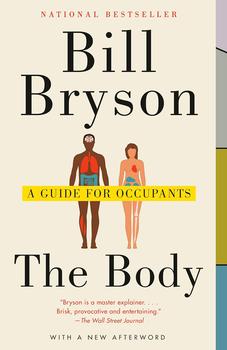Summary | Excerpt | Reviews | Beyond the Book | Readalikes | Genres & Themes | Author Bio

Critics' Opinion:
Readers' Opinion:
First Published:
Oct 2019, 464 pages
Paperback:
Jan 2021, 464 pages
 Book Reviewed by:
Book Reviewed by:
Kim Kovacs
Buy This Book
Harvey didn't understand respiration, so couldn't explain what purpose blood served or why it circulated—two pretty glaring defi-ciencies, as his critics were quick to point out. Galenists additionally believed that the body contains two separate arterial systems—one in which the blood is bright red and another in which it is much duller. We now know that blood traveling from the lungs is full of oxygen and therefore shiny crimson, while blood returning to the lungs is depleted of oxygen and thus rather duller. Harvey couldn't explain how blood circulating in a closed system could be of two colors, which became yet another reason to scorn his theories.
The secret of respiration was deduced not long after Harvey's death by another Englishman, Richard Lower, who realized that blood dulls in color on its way back to the heart because it has given up its oxygen, or nitrous spirit, as he called it. (Oxygen wouldn't be discovered until the following century.) That, Lower reasoned, was why blood circu-lated, to continuously pick up and discharge nitrous oxide, which was quite a big insight and one that should have made him famous. In fact, Lower is remembered more now for another aspect of blood. In the 1660s, Lower was one of several eminent scientists who became interested in the possibility of saving lives through blood transfusions, and he became involved in a series of often gruesome experiments. In November 1667 before an audience of "considerable and intelligent persons" at the Royal Society in London, and without having any idea at all what the consequences might be, Lower transfused about half a pint of blood from a live sheep into the arm of an amiable volunteer named Arthur Coga. Then Lower and Coga and all the distinguished onlookers sat keenly for many minutes waiting to see what would happen. Happily, nothing did. One of those present reported that Coga afterward was "well and merry, and drank a glass or two of canary, and took a pipe of tobacco."
Two weeks later, the experiment was repeated, again without ill effect, which is really surprising. Normally, when foreign substances are introduced in volume into the bloodstream, the recipient goes into shock, so why Coga escaped a miserable experience is puzzling. Unfortunately, the results emboldened other scientists across Europe to conduct transfusion tests of their own, and these took on an increas-ingly inventive, not to say surreal, cast. Volunteers were transfused with milk, wine, beer, and even mercury, as well as the blood of every species of domesticated creature. The results all too often were distressingly agonized, embarrassingly public deaths. Very quickly transfusion experiments were banned or fell into abeyance, and for about a century and a half they remained out of favor.
And then followed a strange thing. Just as the rest of the scientific world was embarking on the outpouring of discovery and insight known to us as the Age of Enlightenment, medicine sank into a kind of dark age. You could hardly imagine more misguided and counter-productive practices than those to which physicians became attached in the eighteenth and even much of the nineteenth centuries. As David Wootton put it in Bad Medicine: Doctors Doing Harm Since Hip-pocrates, "Up until 1865 medicine was almost completely ineffectual where it wasn't positively harmful."
Consider the unfortunate death of George Washington. In December 1799, not long after he had retired as America's first president, Washington spent a long day on horseback in foul weather inspect-ing Mount Vernon, his plantation in Virginia. Returning home later than expected, he sat through dinner in damp clothes. That night he developed a sore throat. Soon he had difficulty swallowing, and his breathing became labored.
Three physicians were called in. After a hurried consultation, they opened a vein in his arm and drained eighteen ounces of blood, almost enough to fill a British pint glass (or overfill an American one). Washington's condition only worsened, however, so his throat was blistered with a poultice of cantharides—what is more commonly known as Spanish fly—to draw out bad humors. For good measure, he was given an emetic to induce vomiting. When all of this failed to produce any visible benefit, he was bled three times more. Altogether about 40 percent of his blood was removed over two days.
Excerpted from The Body by Bill Bryson. Copyright © 2019 by Bill Bryson. All rights reserved. No part of this excerpt may be reproduced or reprinted without permission in writing from the publisher.





The Flower Sisters
by Michelle Collins Anderson
From the new Fannie Flagg of the Ozarks, a richly-woven story of family, forgiveness, and reinvention.

The House on Biscayne Bay
by Chanel Cleeton
As death stalks a gothic mansion in Miami, the lives of two women intertwine as the past and present collide.

The Funeral Cryer by Wenyan Lu
Debut novelist Wenyan Lu brings us this witty yet profound story about one woman's midlife reawakening in contemporary rural China.
Your guide toexceptional books
BookBrowse seeks out and recommends the best in contemporary fiction and nonfiction—books that not only engage and entertain but also deepen our understanding of ourselves and the world around us.